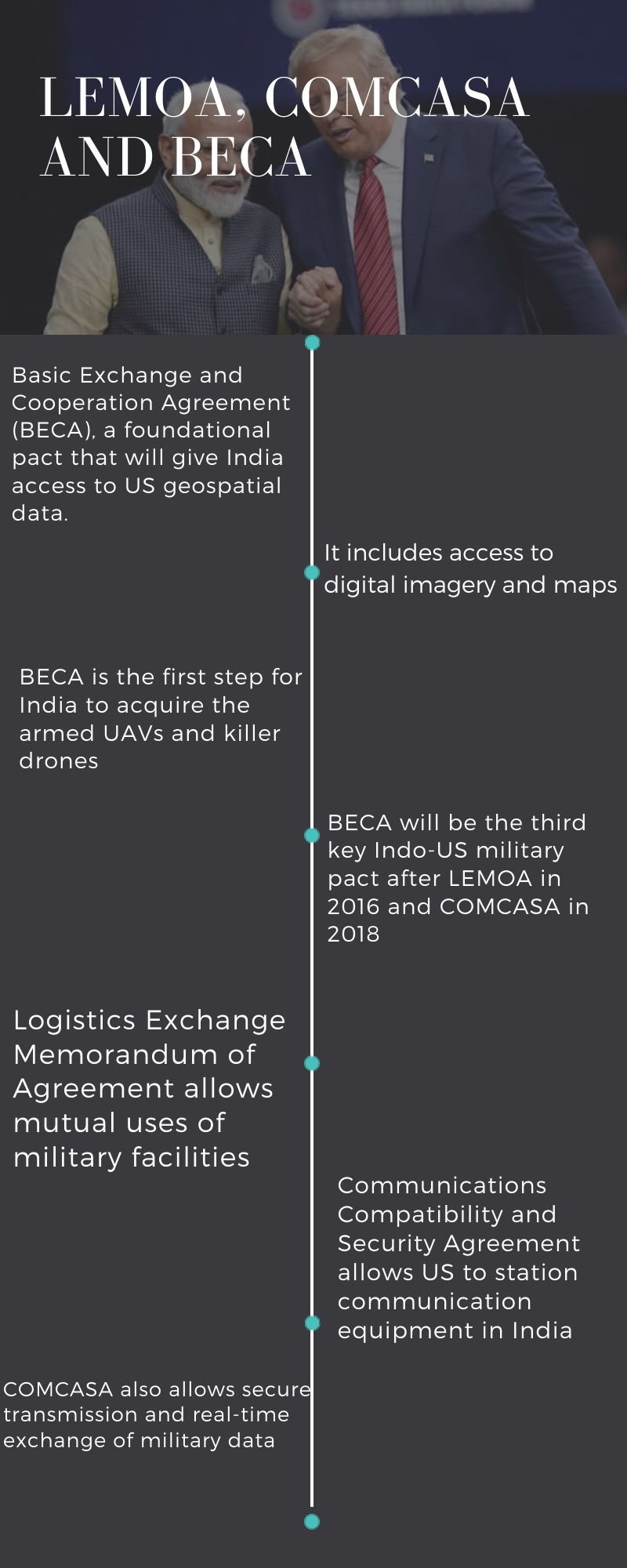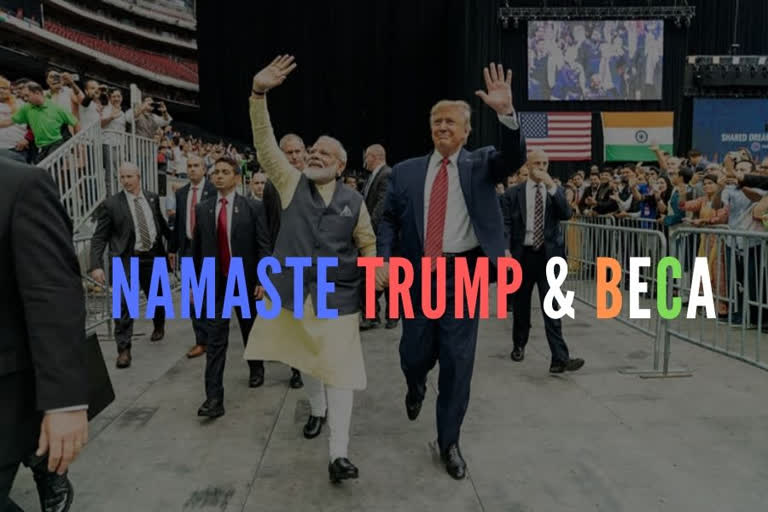New Delhi: Besides the extensive play of optics, except the military, there is little on the ground that the first-ever President Donald Trump visit to India can hope to achieve other than cajoling domestic concerns in both India and the US.
At best, Ahmadabad’s upcoming ‘Namaste Trump’ of February 24, 2020, can be seen as India’s return event for the ‘Howdy Modi’ event of September 22, 2019 in Houston, Texas.
Read: 'Is he lord Ram?' Adhir Ranjan questions gala welcome for Donald Trump
But there is a lot of ground in military cooperation that can be covered during the two-day visit from Monday, an indication of which may be seen in the PM-headed Cabinet Committee on Security (CCS) on Wednesday giving its go-ahead to buy 24 MH-60 multi-mission helicopters for the Indian Navy (costing Rs 15,200 crore) and six more AH-64E Apache attack helicopters (for Rs 5, 691 crore) from the US.

Military-wise, the top take-away from the Modi-Trump meet could be the Basic Exchange and Cooperation Agreement (BECA)—a foundational pact that will give India access to the much advanced and accurate US geo-spatial data including digital imagery and maps.
Read: Will the India-US trade war end?
BECA is the first step for India to acquire the armed UAVs and killer drones that form a lethal component of US state of the art weaponry, as access to the US geo-spatial data is a must for these UAVs to effectively operate. In other words, inking BECA would be the harbinger of the lethal UAVs to India.
Read: Carterpuri has renewed hopes of development ahead of Trump visit
BECA will be the third key Indo-US military pact after the Logistics Exchange Memorandum of Agreement (LEMOA) in 2016 and the Communications Compatibility and Security Agreement (COMCASA) in 2018.
LEMOA allows mutual uses of military facilities while COMCASA allows US to station communication equipment in India besides secure transmission and real-time exchange of military data and information.
But while the meeting of the top leaders of the world’s two largest democracies is meant to convey a strategic front in the face of an increasingly powerful China, President Trump’s India visit is taking off on several wrong notes and may well turn out to be an exercise to optimise the optics.
Read: Mutual consensus to delay trade Deal with US: Indian officials
While President Donald Trump has just scraped out of an impeachment process, Prime Minister Narendra Modi’s sheen is fast wearing off in a country increasingly getting bogged down by economic woes and extensive protests over the controversial Citizenship Amendment Act (CAA).
On Wednesday, less than a week before the President started his Indian journey, the United States Commission on International Religious Freedom (USCIRF) released a new fact sheet on India’s controversial Citizenship (Amendment) Act (CAA), which has muddied the waters.
The USCIRF, said in its report: “The CAA and NRC must also be understood in the context of the growing prominence of the BJP’s Hindutva ideology. This ideological frame views India as a Hindu state and Islam as a foreign and invading religion. Hindutva political rhetoric questions the legitimacy of Muslims’ Indian citizenship and perpetuates the further marginalization of this faith community.”
These are not propitious words before a presidential visit.
Read: UP spruces up Taj Mahal ahead of Trump's Agra visit
The USCIRF is an independent but federal government body entity established by the US Congress to monitor, analyse, and report on threats to religious freedom abroad, that makes foreign policy recommendations to the President, the Secretary of State, and US Congress with the stated aim of deterring religious persecution and to promote freedom of religion and belief.
And then again, in an apt reaffirmation of politicians’ eternal love for people numbers, President Trump has hung on to a 7 million (70 lakh) number. This huge number, seemingly promised by Prime Minister Narendra Modi, is the ‘expected’ size of Indians who would welcome Trump on the streets of Ahmadabad on Monday during his India visit.
One can imagine Indian officials despairingly wringing their hands, trying but in vain, to imagine such huge numbers of people lining the streets. It is therefore the stuff perfect diplomatic nightmares are made up of. By the way, Ahmadabad’s 2020 population would be much less than 9 million.
Read: Saving big trade deal with India for later: Trump
To top it all, Trump has already ruled out a much-expected mega trade deal with India (“We’re not treated very well by India”). In any case, Trump’s style of transactional politics and an Indian economy in a downturn, does not leave Modi with much space to maneuver.
Of course, the India visit will serve as an attempt to garner much of the support of the 40-lakh-strong Indian-American community in the US, more so because NRIs have been among the main support bases of PM Modi. In that, Trump may be looking at the support Indian-origin voters extended to Boris Johnson in the United Kingdom.



